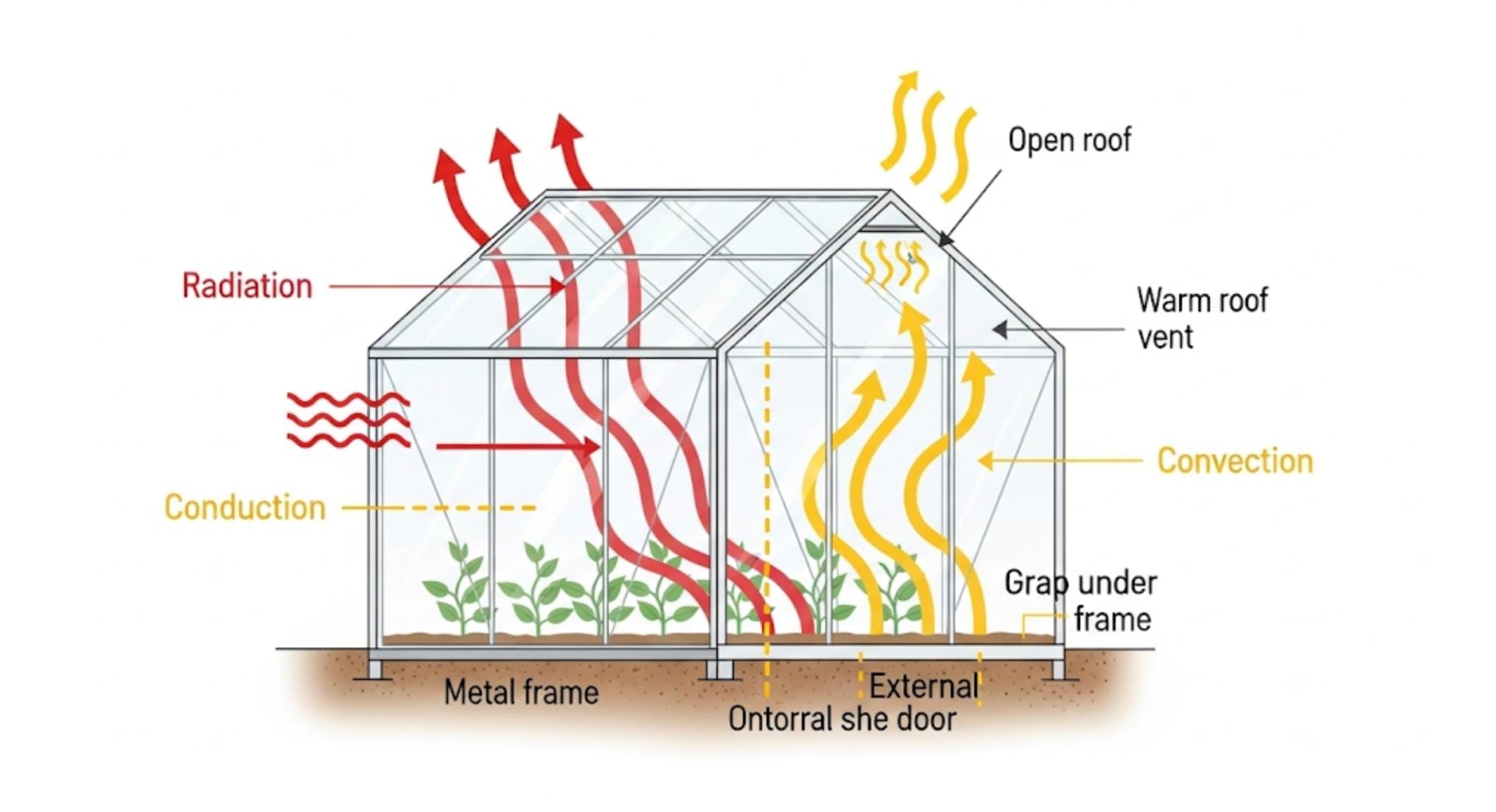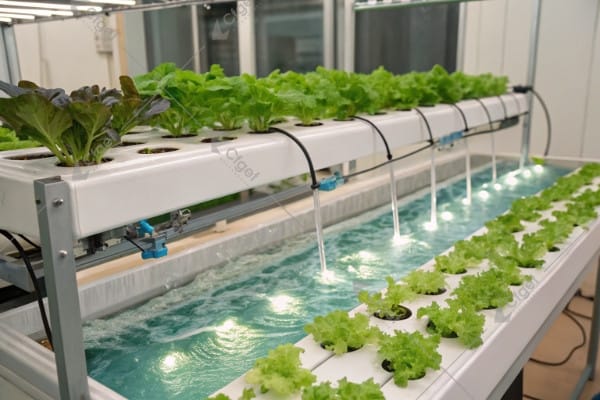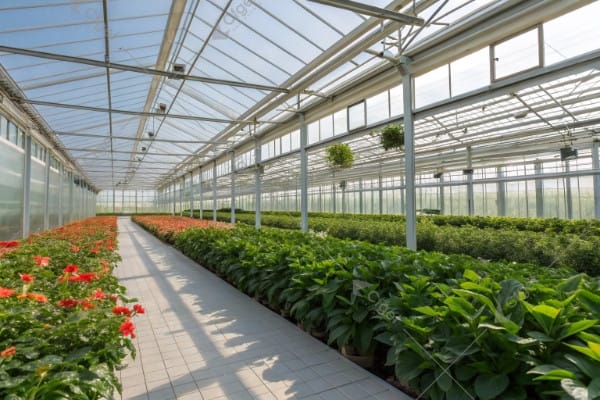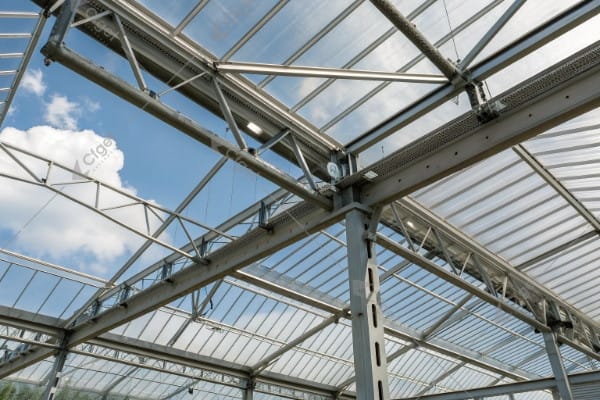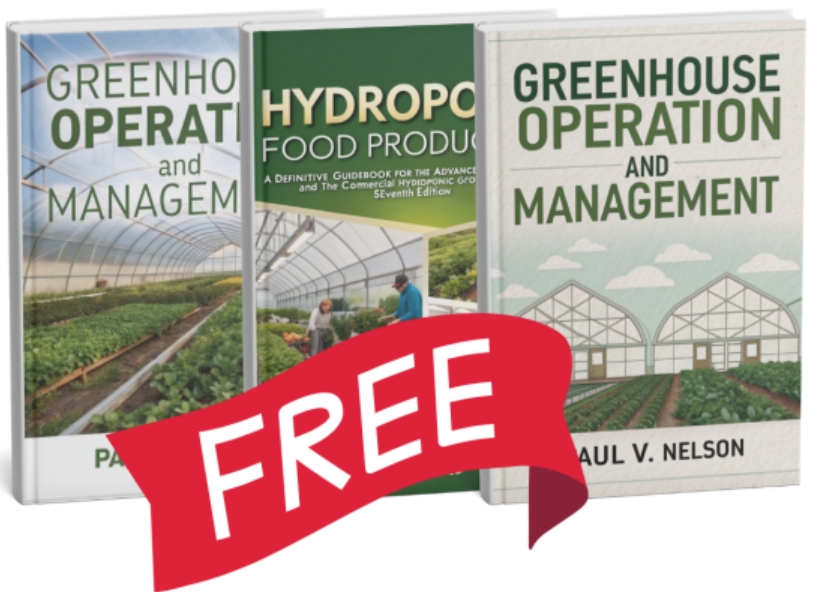Are you concerned about how we’ll feed a growing global population sustainably? Traditional farming faces challenges with resource use and environmental impact. Hydroponic greenhouses offer a promising path forward, changing how we grow food.
Hydroponic greenhouses represent a key part of sustainable agriculture’s future. They allow for high-yield food production using significantly less water and land than conventional methods, often without pesticides, contributing to environmental protection and resource conservation while boosting food availability.
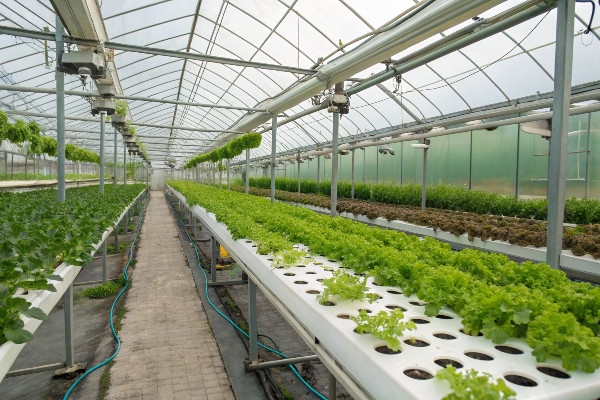
We see traditional agriculture straining under the pressure of climate change and increasing demand. It’s clear we need smarter, more resilient ways to produce food. Hydroponic systems, especially when housed within controlled greenhouse environments, step up as a powerful solution. Let’s explore how this technology is reshaping farming for a better future. I’ve seen firsthand at CFGET how these systems make a difference for growers worldwide.
Don’t Miss:——Is Commercial Greenhouse Farming Really a Profitable Business Opportunity?
Sustainable Food Production: The Role of Hydroponic Greenhouses?
Worried about agriculture’s environmental footprint? Issues like massive water consumption, land degradation, and pesticide runoff are serious concerns. Hydroponic greenhouses provide a sustainable alternative, directly tackling these problems head-on.
Hydroponic greenhouses play a crucial role in sustainable food production by enabling growers to produce more food with fewer resources. They drastically cut water usage, eliminate soil depletion, reduce the need for pesticides, and allow for local food production, minimizing transportation emissions.

Hydroponic systems, by their nature, are central to sustainable practices. Instead of soil, plants receive nutrients directly through water solutions. This method is incredibly efficient. At CFGET, we design systems that recirculate water, meaning water loss is minimal, primarily occurring through plant transpiration. Compared to field farming, where water evaporates or runs off, the savings can be staggering – often up to 90% less water usage. This is a game-changer, especially in water-scarce regions like parts of Central Asia or areas facing drought.
Land use is another critical factor. Hydroponics allows for vertical farming and densely packed growing configurations within a greenhouse. You can grow significantly more produce in the same square footage compared to traditional farms. This frees up land for reforestation or conservation, reducing agriculture’s spatial footprint. We’ve helped clients, from urban farmers in Southeast Asia to large producers in Europe, maximize their yield per square meter using techniques like Nutrient Film Technique (NFT) or Deep Water Culture (DWC).
Pesticide and herbicide use is drastically reduced, often eliminated. Growing in a controlled greenhouse environment minimizes exposure to pests and diseases. When combined with hydroponics (no soil-borne pathogens), the need for chemical treatments plummets. This benefits the environment by preventing chemical runoff into waterways and results in cleaner, healthier produce for consumers. This aligns perfectly with the high standards for sustainability certification often sought by our European and American clients.
Furthermore, hydroponic greenhouses support local food production. Growing food closer to consumers reduces transportation distances, cutting down on fossil fuel consumption and greenhouse gas emissions associated with "food miles." It also means fresher produce with a longer shelf life. I remember a project in a remote community where establishing a hydroponic greenhouse provided fresh vegetables year-round, something previously impossible due to climate and logistics.
Here’s a breakdown of how hydroponics contributes to sustainability:
| Sustainability Factor | Traditional Farming Challenges | Hydroponic Greenhouse Solution | CFGET’s Contribution |
|---|---|---|---|
| Water Use | High consumption, runoff | Up to 90% less water, recirculation systems | Designing efficient water delivery & recirculation systems |
| Land Use | Large area needed, degradation | High density, vertical farming possible, less land required | Space-efficient greenhouse designs and growing systems |
| Pesticide Use | Often high reliance | Minimal or no need due to controlled environment & no soil | Integrated pest management support, clean production focus |
| Soil Health | Depletion, erosion | Not applicable, soil-less method | Expertise in soil-less cultivation techniques |
| Carbon Footprint | Tillage, transport emissions | Reduced transport (local production), potentially lower inputs | Energy-efficient climate control, promoting local sourcing |
| Nutrient Runoff | Water pollution risk | Contained nutrient solutions, minimized runoff | Precise nutrient delivery systems, monitoring tools |
Building a truly sustainable food system requires integrating technologies that address these core challenges. Hydroponic greenhouses, designed and managed correctly, are a cornerstone of this effort. Our experience at CFGET spans over 28 years, helping growers implement these sustainable practices effectively across diverse global contexts.
Don’t Miss:——Sustainable Agriculture: Is the Role of Smart Greenhouses Key to a Greener Future?
Innovations in Hydroponic Greenhouse Technology: Automation and Control Systems?
Struggling to maintain optimal growing conditions consistently? Managing a greenhouse environment manually is labor-intensive and prone to error, impacting crop yield and quality. Automation and advanced control systems are revolutionizing hydroponic greenhouse management.
Innovations in automation and control systems are key drivers for hydroponic greenhouse efficiency. Technologies like IoT sensors, AI-driven climate control, automated nutrient dosing, and robotic systems optimize resource use, reduce labor costs, and ensure consistently high crop quality.
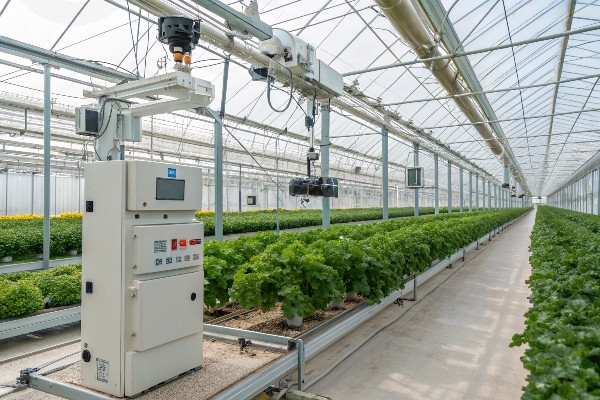
The level of control we can achieve in modern hydroponic greenhouses is remarkable, thanks largely to technological advancements. Gone are the days of solely relying on manual checks and adjustments. Today, sophisticated systems monitor and manage nearly every aspect of the growing environment. At CFGET, we integrate these technologies to provide growers with precision and peace of mind.
Think about the core elements: climate, light, and nutrition. Automation touches all of them.
- Climate Control: IoT (Internet of Things) sensors continuously gather data on temperature, humidity, CO2 levels, and light intensity. This data feeds into centralized control systems. These systems automatically adjust ventilation, heating, cooling (crucial for humid Southeast Asian climates or hot summers elsewhere), shading, and supplemental lighting to maintain the perfect conditions for specific crops. Algorithms, sometimes powered by Artificial Intelligence (AI), can even predict environmental changes and adjust proactively, optimizing energy use while preventing stress on the plants. This precision is highly valued by our European and American clients focused on quality and efficiency.
- Nutrient Delivery: Manual mixing and delivery of nutrient solutions can be inconsistent. Automated dosing systems precisely mix and deliver the required nutrient formulations based on crop type, growth stage, and real-time sensor readings (like pH and EC – electrical conductivity). This ensures plants get exactly what they need when needed, maximizing growth and preventing nutrient imbalances or waste. This reliability is essential everywhere, but the robustness of these systems is particularly appreciated by our Central Asian clients dealing with challenging conditions.
- Lighting: LED technology has transformed greenhouse lighting. Modern LEDs are highly energy-efficient and allow growers to control the light spectrum, tailoring it to specific plant needs to encourage vegetative growth, flowering, or fruiting. Automated systems manage photoperiods precisely, ensuring consistent growth cycles year-round, regardless of external weather conditions.
- Automation & Robotics: Beyond environmental control, automation extends to tasks like seeding, transplanting, monitoring plant health (using cameras and AI image analysis), and even harvesting in some advanced systems. This reduces reliance on manual labor, which can be costly or scarce, and increases operational efficiency.
Here’s how these innovations translate into tangible benefits:
| Innovation Area | Technology Examples | Benefits | Relevance to CFGET Clients |
|---|---|---|---|
| Climate Management | IoT Sensors, AI Control, Automated Vents/Shades | Optimal growth conditions, energy efficiency, reduced plant stress | Precision (EU/US), Humidity Control (SEA), Extreme Temperature Management (Central Asia) |
| Nutrient Management | Automated Dosing Systems, EC/pH Sensors | Precise nutrient delivery, reduced waste, consistent quality | Accuracy (EU/US), Reliability (Central Asia), Ease of Use (support needed for SEA) |
| Lighting Control | Smart LEDs, Timers, Light Sensors | Optimized growth cycles, energy savings, year-round production | Consistent Yields (All), Energy Efficiency (EU/US) |
| Labor & Operations | Robotics (seeding, harvesting), AI Monitoring | Reduced labor costs, increased efficiency, early problem detection | Cost-Effectiveness (All), Scalability (Large Producers) |
| Data & Analytics | Centralized Platforms, Cloud Monitoring | Informed decision-making, remote management, predictive maintenance | Operational Oversight (All), Service/Support Needs (Central Asia), Research Data (Institutes) |
Integrating these technologies requires expertise. It’s not just about installing sensors; it’s about creating a cohesive system where all components work together seamlessly. I recall working with a large agricultural producer who initially struggled with integrating disparate systems. By implementing a unified CFGET control platform, they gained much better oversight and saw significant improvements in yield consistency and resource efficiency. The future of hydroponic greenhouses is undeniably tied to these smart technologies, making farming more precise, efficient, and less labor-intensive.
Hydroponic Greenhouses and Food Security: Addressing Global Challenges?
Is feeding a rapidly growing world population keeping you awake at night? Traditional agriculture faces limitations due to climate change, land scarcity, and water shortages, posing significant threats to global food security. Hydroponic greenhouses offer tangible solutions.
Hydroponic greenhouses significantly bolster food security by enabling reliable, localized, year-round food production, independent of external climate conditions or soil quality. They increase yields, reduce post-harvest losses, and can be implemented in diverse locations, including urban areas and harsh environments.
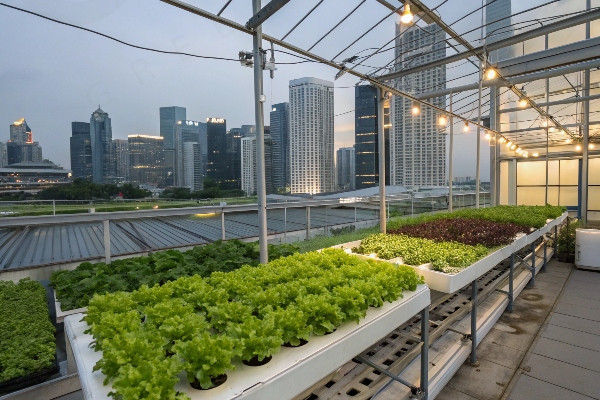
Food security rests on four pillars: availability, access, utilization, and stability. Hydroponic greenhouses positively impact all four. Let’s look at how.
- Availability: Hydroponics allows for significantly higher yields per unit area compared to traditional farming. Combined with the controlled environment of a greenhouse, production can continue year-round, unaffected by seasons or adverse weather events like droughts, floods, or frosts. This ensures a consistent availability of fresh produce. At CFGET, we design greenhouses tailored to specific climates, ensuring resilience whether it’s against monsoons in Southeast Asia or extreme cold in Central Asia. This reliability is fundamental to food security.
- Access: By enabling food production closer to consumers, even in urban centers ("urban farming") or remote regions with poor soil, hydroponic greenhouses improve access. Reduced transportation distances mean lower costs and fresher food reaching consumers. We’ve seen projects where community greenhouses provide vital access to nutritious food in areas previously considered food deserts. This localization empowers communities and reduces reliance on long, complex supply chains that are vulnerable to disruption.
- Utilization: Hydroponic systems, particularly within clean greenhouse environments, often produce cleaner, residue-free vegetables because the need for pesticides is minimal or non-existent. This improves the safety and nutritional utilization of the food produced. Furthermore, reduced transit times mean less spoilage and nutrient degradation post-harvest.
- Stability: The controlled nature of greenhouse hydroponics provides stability against climate change impacts. While open fields are vulnerable to unpredictable weather, greenhouses offer a buffered, managed environment. This predictable output is crucial for stable food supplies, both locally and regionally. The long-term service and support CFGET provides ensure these systems remain operational and stable over time, a key concern for growers investing in this technology.
Consider the specific challenges different regions face:
- Southeast Asia: High population density and urbanization make land scarce. Hydroponics allows intensive urban and peri-urban farming. CFGET focuses on designs that manage high humidity and allow for rapid installation.
- Europe and America: Consumers demand high-quality, sustainably produced food. Hydroponic greenhouses meet these demands for local, often pesticide-free produce, supported by precision technology.
- Central Asia: Extreme climates and logistical challenges in remote areas make traditional farming difficult. Durable CFGET greenhouses combined with water-efficient hydroponics offer a reliable local food source. Our focus on robust structures and responsive after-sales service is critical here.
Here’s a table summarizing the impact on food security pillars:
| Food Security Pillar | Traditional Farming Challenges | Hydroponic Greenhouse Contribution | CFGET Focus |
|---|---|---|---|
| Availability | Weather-dependent yields, land limits | Higher yields per area, year-round production, climate resilience | Climate-specific designs, maximizing yield potential |
| Access | Long supply chains, limited arable land | Local production (urban/remote), reduced transport costs | Adaptable systems for diverse locations, supporting local food networks |
| Utilization | Pesticide residues, post-harvest loss | Cleaner produce, reduced spoilage due to shorter supply chains | Promoting clean production methods, ensuring food safety |
| Stability | Climate change vulnerability, seasonal gaps | Consistent output regardless of external conditions, buffer against shocks | Durable structures, reliable systems, long-term service & support |
While hydroponic greenhouses1 aren’t a silver bullet for all food security issues (initial investment costs can be a factor), they are a powerful tool. My experience confirms that when implemented thoughtfully, considering local needs and providing adequate training and support, they make a substantial difference in strengthening food systems globally.
Nutrient solutions: Key success factors for hydroponic greenhouses?
Wondering what makes hydroponic systems truly productive? While the structure and climate control are vital, the heart of hydroponics lies in the nutrient solution. Getting this right is absolutely critical for healthy plants and high yields.
The precise formulation, delivery, and management of nutrient solution2s are paramount success factors in hydroponic greenhouses. Providing plants with the optimal balance of macro- and micronutrients directly through water ensures rapid growth and health, but requires careful monitoring and adjustment.

In traditional farming, soil acts as a reservoir and buffer for nutrients. In hydroponics, we bypass soil entirely. This means we have complete control over plant nutrition, but also that the plants are entirely dependent on the solution we provide. As mentioned in my insights, this water-and-fertilizer mixture is the lifeline for crops like lettuce, spinach, herbs, tomatoes, peppers, and even root crops using specialized techniques like aeroponics or mist culture for potatoes.
Several factors contribute to successful nutrient management:
- Formulation: Plants require a range of essential nutrients. Macronutrients (like Nitrogen, Phosphorus, Potassium, Calcium, Magnesium, Sulfur) are needed in larger quantities, while micronutrients (like Iron, Manganese, Zinc, Copper, Boron, Molybdenum) are needed in trace amounts. The ideal ratio varies significantly depending on the crop type, its growth stage (vegetative vs. flowering/fruiting), and even environmental conditions like light intensity and temperature. Starting with a proven recipe is crucial, but adjustments based on observation and testing are often necessary. This is often the steepest learning curve for new hydroponic growers, as I noted. Experience, or reliable guidance, is key.
- Water Quality: The source water used to mix the nutrient solution is critical. Factors like pH (acidity/alkalinity) and the presence of dissolved minerals (EC – Electrical Conductivity) must be considered. High levels of certain minerals in the source water might require adjustments to the nutrient recipe. Ideally, water should be tested before starting. Rainwater or Reverse Osmosis (RO) water provides a clean slate but adds cost.
- Delivery System: How the nutrient solution reaches the roots matters. Common methods we see at CFGET include:
- NFT (Nutrient Film Technique): A thin film of nutrient solution2 flows over the bare roots in channels. Great for leafy greens.
- DWC (Deep Water Culture): Roots are suspended in an oxygenated nutrient solution. Simple and effective for fast-growing plants.
- Drip Irrigation: Solution is dripped near the base of plants growing in an inert medium (like coco coir or rockwool). Common for larger plants like tomatoes.
- Aeroponics/Mist Culture: Roots are suspended in the air and misted with nutrient solution. Excellent oxygenation, good for root crops, but technically demanding.
- Tower/Vertical Systems: Various methods adapted for vertical space efficiency.
Each system has pros and cons regarding oxygenation, temperature control, and suitability for different plants.
- Monitoring and Adjustment: Regular monitoring of the nutrient solution’s pH and EC is non-negotiable. pH affects nutrient availability – if it’s too high or too low, plants can’t absorb certain elements even if they are present. EC indicates the total concentration of dissolved salts (nutrients). Plants consume nutrients and water at different rates, changing the solution’s balance over time. Automated sensors and dosing systems help maintain optimal levels, but regular manual checks are still recommended. Adjustments involve adding pH up/down solutions or replenishing nutrients/water.
Here’s a table highlighting key aspects of nutrient solution management:
| Aspect | Key Considerations | Importance | CFGET Support |
|---|---|---|---|
| Formulation | Crop type, growth stage, macro/micronutrient balance | Directly impacts plant growth, yield, and quality | Providing standard recipes, consulting on custom formulations |
| Water Quality | Initial pH, EC, mineral content | Affects nutrient availability and final solution stability | Water testing guidance, advice on water treatment |
| Delivery Method | NFT, DWC, Drip, Aeroponics, etc. | Impacts root oxygenation, efficiency, system complexity | Designing and supplying appropriate systems for specific crops |
| pH Level | Typically 5.5-6.5 (crop dependent) | Critical for nutrient uptake by plants | Providing monitoring tools, automated pH controllers |
| EC Level | Varies by crop and stage (measures nutrient strength) | Indicates total nutrient concentration, prevents deficiency/toxicity | Providing monitoring tools, automated nutrient dosers |
| Temperature | Ideal range often 18-22°C (65-72°F) | Affects oxygen levels and root health | Solution chilling/heating options, system design considerations |
| Oxygenation | Essential for root respiration | Prevents root diseases, supports nutrient uptake | Air stones (DWC), proper flow rates (NFT), misting (Aeroponics) |
| Replenishment | Regular top-offs or complete solution changes | Maintains nutrient balance and prevents buildup of pathogens | Guidance on management schedules, automated replenishment systems |
Mastering nutrient solutions is fundamental to leveraging the full potential of hydroponic greenhouses. It requires knowledge, attention to detail, and the right tools. In my work at CFGET, assisting clients in optimizing their nutrient strategies is one of the most impactful ways we help them achieve success, whether they are growing leafy greens with a 30-35 day cycle or cultivating high-value fruits.
Conclusion
Hydroponic greenhouses are undeniably shaping the future of sustainable farming, offering high yields with fewer resources. They enhance food security globally and benefit from continuous technological innovation.
